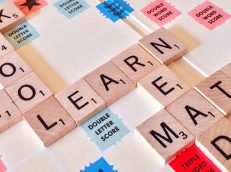Transformative learning is a collaborative process that focuses on the individual’s intrinsic motivation to learn. It is also a change in behavior that results from the learning experience.
To create transformative learning experiences, you must:
1. Choose an appropriate learning experience for your students.
Consider choosing an existing one or creating a new one specifically for this group of students based on their needs and interests.
2. Identify which steps you will use to lead the students through the learning experience.
Keep in mind that the process itself can be transformative, not just the content or product being learned. So be sure to include steps in your plan that focus on interactions with each other and/or with you as the facilitator of this transformative process.
Include discussion, sharing, active listening, inquiry, role-playing, hands-on activities, cooperative learning, games/interactive activities (etc.). These will help them learn how to be better learners in general—and they will feel like they are actively participating in their own transformation!
3. Plan how you will facilitate the process.
Will you be using the entire class at once, or will you break them into smaller groups? Will you be working with them individually? Will they work alone or in pairs?
Are there particular roles or assignments that will help guide them through the process? Are there specific tools that will help (or hinder) their progress, such as video cameras, computers, art supplies, online discussions and forums, or special software applications?
4. Prepare materials for your students.
If you are creating a new learning experience for your students and don’t have existing materials to use as a guide, it may be helpful to think about what types of information would be most helpful to your students.
This can be especially important if you are creating a transformative learning experience in an area where there is no specific standard curriculum (e.g., persuasive writing).
5. If necessary, create an assessment plan that addresses the learning objectives you have identified for this transformative learning experience.
You may also want to use some form of assessment during the process itself—perhaps as part of a group discussion or role-playing activity—to get immediate feedback on how well your students are progressing through the steps of the process.
6. Conduct the learning experience.
Your role as facilitator is to guide the students through each step of the process, and to assess their progress and ensure that they are learning what you have planned for them to learn. If you are working with small groups, you may need to switch roles as needed (e.g., from facilitator to participant). You may also want to spend some time at the end of each session reflecting on what worked well, what didn’t work so well, and how you can improve it for next time.
7. Reflect on how this transformative learning experience can be used in your future teaching.
How will this change how you approach future instruction? What else can you do to help your students develop into better learners? How can you continue to build on this experience so that your students become more intrinsically motivated and more independent learners?
8. Provide feedback for yourself and for your students about their experiences in this transformative learning experience.
What worked well, what didn’t work so well, and how it could be improved for next time. Share these reflections with them—they will appreciate hearing from their peers as much as they appreciate hearing from you.






